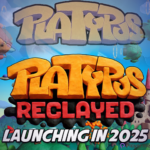A year after OpenAI shut down its AI classifier, a tool the company claimed to determine whether another AI had written a text passage due to its low accuracy, a spokesperson from the company confirmed that a ChatGPT watermark system was already in the works. However, there is an internal debate about whether to release it or not.
According to the spokesperson’s statement to TechCrunch, they confirmed the existence of a ChatGPT watermark system. However, they are taking a “deliberate approach” due to “the complexities involved and its likely impact on the broader ecosystem beyond OpenAI”, as their recent survey showed that at least 30% will use the software less if they implement the watermarking system.
They explained: “The text watermarking method we’re developing is technically promising, but has important risks we’re weighing while we research alternatives, including susceptibility to circumvention by bad actors and the potential to impact groups like non-English speakers disproportionately.”
Everything to Know About the ChatGPT Watermark System

In an updated blog post, OpenAI shared that its ChatGPT watermark method is very accurate, with a 99.9% effectiveness and resistance to “tampering, such as paraphrasing.” Moreover, the system does not affect the quality of its chatbot’s text output, as the company planned to make small changes to how ChatGPT selects words by creating an invisible watermark they could detect with its system.
However, the blog post mentioned its ChatGPT watermark system focuses solely on its writing and not other companies’ models. The blog post explained: “It is less robust against globalised tampering, like using translation systems, rewording with another generative model, or asking the model to insert a special character between every word and then deleting that character.”
Hence, their concern for bad actors potentially misusing its ChatGPT watermark system to attribute false information to the chatbot, leading to misinformation or defamation.
Besides, as the ChatGPT watermark system predicts the most likely words and phrases that follow previous ones, creating a detectable pattern, users may feel worried that the system could compromise their anonymity, raising concerns about where it stores their information and what they do with it.
Related: ChatGPT-5: Release Date, Subscription Price and Everything Else We Know So Far
Other Notable AI Content Detection Systems
As OpenAI is taking a different approach to detecting AI-generated content with its ChatGPT watermark system, listed below are some notable AI content detection systems that identify and analyse content created by AI, ensuring authenticity and preventing plagiarism:
- Turnitin: Widely used in educational institutions to detect plagiarism in student submissions. It compares the submitted text against a vast database of academic papers, articles, and online content. However, students can exploit a loophole with apps like Quillbot or Paraphraser.
- TraceGPT: The system uses advanced algorithms to recognise patterns and features unique to GPT-generated text, such as GPT-3 or GPT-4. It traces the text origin, identifies it as AI-generated, and continuously learns and improves, adapting to new iterations of GPT models and other AI text generators.
- Copyscape: Mainly used by content creators and SEO professionals to check for duplicate content on the web. It utilises advanced web crawling and text comparison algorithms to detect duplicate content, ensuring that content is original and not copied from other sources.
- Winston AI: Similar to TraceGPT, Winston AI can identify whether a piece of content was from an AI model, such as GPT-3, GPT-4, or similar language models. The platform compares submitted content with real-time analysis, ensuring that the content is original and has not been copied or generated by an unauthorised AI tool.
ChatGPT Watermark System Is a Positive Step Forward

While 30% of survey users mentioned they would use ChatGPT less if OpenAI implemented its watermark system, some employees still reportedly feel that watermarking is effective. In our opinion, the concept of the ChatGPT watermark system highlights the importance of authenticity, accountability, and ethical use of AI-generated content.
Although implementing it now presents challenges, such as privacy concerns and technical problems, the system is still “in the early stages” of exploring embedding metadata. Therefore, there is still time for internal and even public testing that the ChatGPT watermark is a positive step forward and a company’s responsibility rather than a fear of change to your targeted audience.
For more up-to-date AI or tech-related news, follow our Facebook for timely updates on the latest announcements.
Author Profile
Latest entries
 GAMING2024.11.25Strinova Agents Tier List: A Detailed Guide About the New Anime 5v5 Shooter
GAMING2024.11.25Strinova Agents Tier List: A Detailed Guide About the New Anime 5v5 Shooter GAMING2024.11.25Antonblast: Everything to Know About the Action-Packed Platformer Before Its Release Date on December 3
GAMING2024.11.25Antonblast: Everything to Know About the Action-Packed Platformer Before Its Release Date on December 3 GAMING2024.11.22Guntouchables, An Online Co-Op Shooter Title by Ghost Ship Publishing, Is Launching Early Access in Spring 2025
GAMING2024.11.22Guntouchables, An Online Co-Op Shooter Title by Ghost Ship Publishing, Is Launching Early Access in Spring 2025 GAMING2024.11.22Platypus Reclayed, A Remake of the Original Platypus Game in 2002, Is Launching in 2025
GAMING2024.11.22Platypus Reclayed, A Remake of the Original Platypus Game in 2002, Is Launching in 2025





